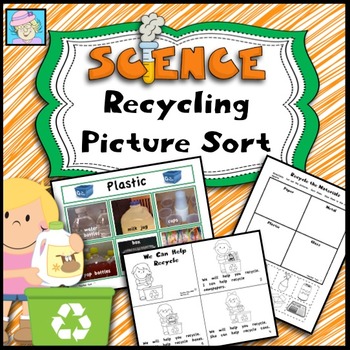Earth Day Activities Science Kindergarten and 1st Grade
- PDF
Description
This sorting activity is perfect to include in your science center for Earth Day! It includes 6 picture sorting cards for each of the following categories of recyclable materials: Paper, plastic, metal, and glass.
The activity also includes 3 response sheets. One sheet has students write some of the items they sorted. Another sheet has students cut, glue, and sort pictures of
recyclable materials. The third sheet is a draw-and-write take home sheet. A page of teacher notes regarding recycling is also included. The set also includes the book, “We Can Help Recycle.” Perfect to use on Earth Day, it comes in two different levels to help with differentiation. This book is also included in my “Sight Word Books for Kindergarten” set. Click here to take a look!
Corresponding Science Standard for Early Elementary (Illinois)
13.B.1e Demonstrate ways to reduce, reuse and recycle materials.
and First Grade)
K.MD.3. Classify objects into given categories; count the numbers
of objects in each category and sort the categories by count.
1.MD.4. Organize, represent, and interpret data with up to three
categories; ask and answer questions about the total number of
data points, how many in each category, and how many more or
less are in one category than in another.





